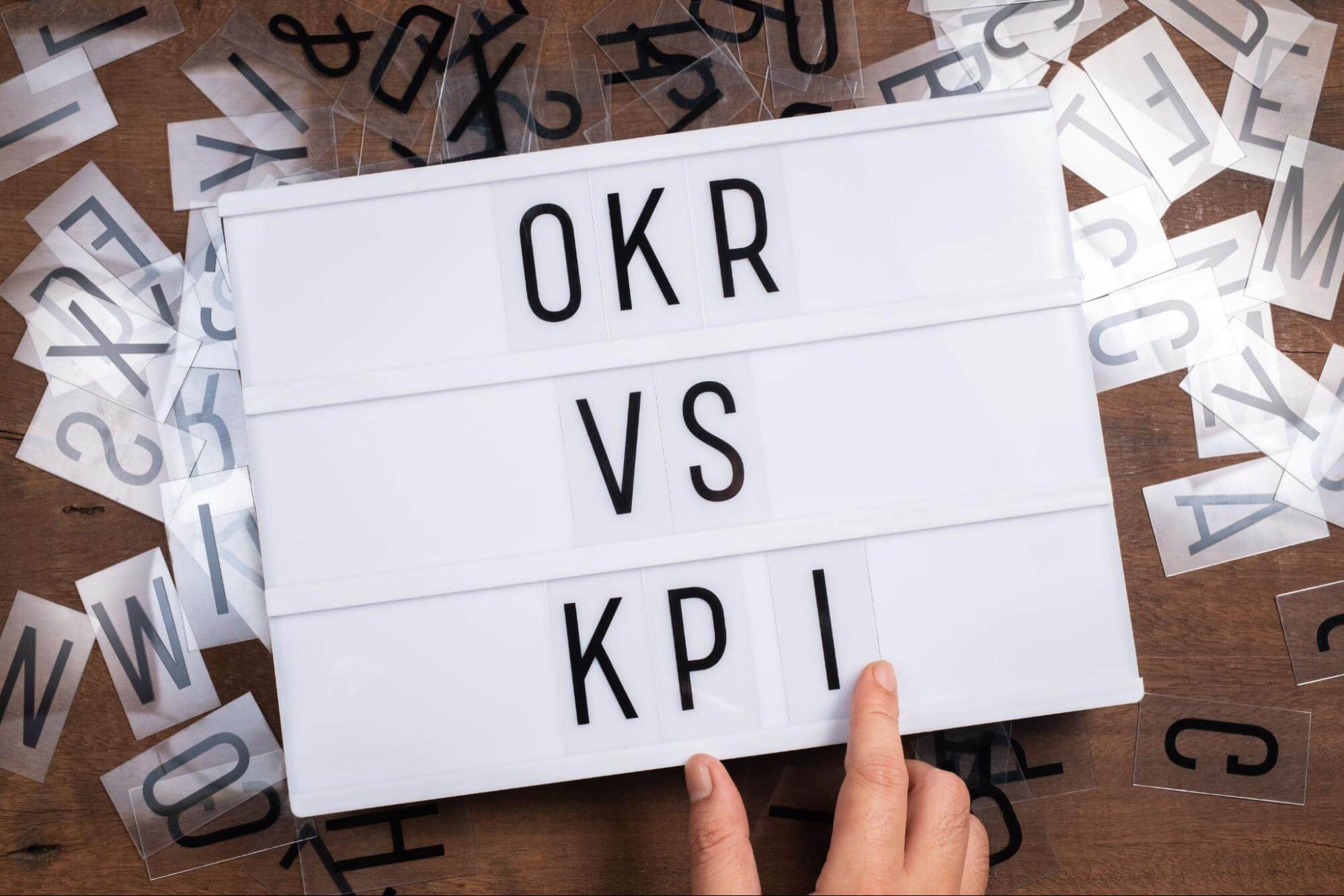Here, we’ll explain exactly how to create your objectives and associate them with key results that will keep your efforts on the right track.
Achievement is the result of effort, isn’t it? Not quite! Many people work very hard but seem to accomplish very little. That’s because their actions aren’t focused. It takes effort in combination with goals that are aggressive yet realistic and measurable. This is true for both personal and professional goals, and OKRs are the perfect tool for ensuring your efforts lead to fruitful results.
OKR stands for ‘Objectives and Key Results’. They have a long history, dating back to 1954. This was when Peter Drucker created MBO (management by objectives). Later, MBO was modified by Intel founder Andrew Grove into OKR. The evolution of OKR continued until it was eventually put into practice at Google, where it is still used to this day.
This is a tool you can use on your own or within a team to set ambitious goals, increase motivation and engagement, and measure progress. The objective is your key accomplishment. What major goal do you want to achieve? Each objective is then associated with three to five key results. These are measurable benchmarks that help to determine that progress is being made.

Now that you know what an OKR is, it’s time to learn how to make them work for you. Here, we’ll explain exactly how to create your objectives and associate them with key results that will keep your efforts on the right track.
The objective you write should reflect a major change, reach, or forward movement. It should be transformative
The objective you write should reflect a major change, reach, or forward movement. It should be transformative. It can help to think of an objective as falling into one of three categories:
- Improving — These are the objectives that focus on taking something that exists and making it better.
- Innovating — These objectives also deal with things that exist but involve completely transforming them.
- Building — Creating something entirely new.
Know The Difference Between an OKR And a KPI

OKRs and KPIs (Key Performance Indicators) are two different things. It’s important not to confuse the two. However, an OKR isn’t a replacement for a KPI. In fact, they can work together. Consider this example.
Imagine that you want to be extraordinarily physically fit. You might create OKRs to help you increase your fitness and move towards those goals. One of these might have ‘Master Long Distance Running’ as your objective. Your key results might be:
- Run at least four out of seven days each week.
- Increase distance ran without stopping by 15% each week.
- Run five miles non-stop within 30 days.
Now, here’s where KPIs come in. Your OKR is about working towards your big mission. Your KPIs are things you will keep track of the entire time to ensure that everything is going as it should. For example, sleeping at least seven hours each night would be a KPI. So would drinking 32 ounces of water each day.
Sleeping and staying hydrated are things you would always do to stay on track as a distance runner. Conversely, your key results are fluid. Someone who wants to run a marathon may start with an objective to run five miles. Eventually, that objective will need to evolve to 26.2 miles.
So getting your Objectives and Key Results may be one part of the task at hand, but knowing how to track your KPIs is something different. Many companies are moving away from office-based structures to home-based work, so they may need some guidance on how to better track their KPIs and how to avoid The 7 Most Common Remote Work Mistakes.
Bublup offers an innovative solution for both saving and organizing your files the way you see fit, so that tracking the existing progress and turning all the small achievements into KPI points for easy tracking should be a matter of a few clicks.
Bublup offers an innovative solution for both saving and organizing your information the way you see fit, so keeping tabs on existing progress and turning all the small achievements into KPI points for easy tracking should be a matter of a few clicks.
Learn to Define Your Objectives

It’s time to define your objectives, but first, here’s something that may be a bit surprising.
Perfect Success is a Bad Thing
It’s true! In the case of OKRs, you should be aiming for an achievement rate of around 70%. That’s because the point of OKRs is for you and your team to stretch beyond your current capabilities. If everything you do is a home run, then you really aren’t pushing yourself.
At least one of the following should apply to your OKRs:
- Learning a new skill.
- Applying new skills or concepts.
- Risking failure.
- Attempting things you haven’t accomplished previously.
If you are easily hitting your goals, it’s time to write a new OKR to move towards your next achievement.
Other Common OKR Mistakes
Be wary of these other potential OKR mistakes:
- Business as Usual – The OKR doesn’t require any real effort or change.
- Low Value – Achieving the OKR won’t really benefit the business
- Sandbagging – When a team is able to ‘fake it’ by making it appear as if achieving their OKRs requires more effort than it really does.
Examples of The Three Objectives
Let’s say you own a company that produces airplane engine components for a variety of companies. At the end of the assembly line, your employees must read the serial number stamped on each part, then place it in a corresponding box to be shipped to the right aviation corporation.
It’s a tedious process, so you decide to build something that will automate this. So, you write an objective that says, ‘Fabricate a machine that can read the serial numbers on airplane parts, then sort them into the correct boxes.’ You achieve the goal and end up with a machine that sorts accurately 70% of the time. This leaves your workers having to hand sort only 30% of the parts they used to.
A few years later, you decide that you want to get your numbers closer to 100%. Your OKR is ‘Significantly improve the accuracy of the parts sorting process.’
To do this, you must improve on the process that includes part sorting. You realize that the parts with deeply etched serial numbers are always sorted automatically. The ones with more faded serial numbers usually end up in the other 30%. So, you improve your manufacturing process to ensure all parts are deeply etched. Your parts are now automatically sorted 90% of the time.
Now you read about a car parts manufacturer automating their sorting process with 100% accuracy. To do this, they’ve redesigned the entire process to incorporate an AI module that scans each part and compares the serial number to an existing database. You decide you need to innovate an AI-based solution to get the same results. Your OKR is, ‘Incorporate AI into the automated sorting process to eliminate sorting errors.’
Establishing Your Key Results

The good thing about objectives is that they really allow you to push yourself or your team to accomplish great things. However, objectives are written at a very high level. Your key results are more ‘dialed in.’ They detail specific, measurable results that must be obtained before you can say you’ve reached your goal.
Because of this, your key results will usually have a number or percentage or some other binary way of determining that you have met that particular milestone. Going back to the example of building a parts’ sorter, you might write a key result that says, ‘Get 50% of manufacturing floor supervisors to agree to test the prototype of the auto-sorter when the prototype is complete.’
Remember that whatever your key results measure, that should be mission-critical. Frank Hamilton, a Content Marketing Department Manager at TrustmyPaper, says, “The idea is that when you achieve your key results, you will have achieved your objective. So, eliminate things that may be helpful, and replace those with things that create the outcomes you want.”
Increasing your running distance by 10% each week is a measurable activity that contributes to your desire to be a long-distance runner. Listening to a running podcast each week might help you achieve your running goals, but achieving a 100% podcast listening goal doesn’t indicate you are any closer to your goal. This illustrates that every key result should directly impact the objective and that achieving one KR is not enough to indicate adequate progress.
Set Your Start And Endpoints
It’s best to include your starting point and the desired ending goal when you set your key results. If your key result is a 15% improvement in customer satisfaction, you will need to know the current customer satisfaction rate. That’s your starting point. Your ending point is that number plus 15%. This helps to ensure you always measure the right data too.
Final Thoughts
It is nearly impossible to state how important goal-setting is to your success. Unfortunately, many goals are never realized, but that’s not because of a lack of effort. Instead, the effort may be disorganized with no clear way of defining success. By implementing OKRs, you provide yourself with a working tool that allows you to define goals along with a roadmap for achieving them. There are good reasons that organizations like Google are highly invested in using OKRs. They provide an excellent framework for achieving at both an organizational and individual level.
About the author
Erica Sunarjo is a content developer at Supreme Dissertations. She relies on research done by her team in thinking of new ways to present content to her customers. She spends her free time reading the NY Times summer reading list and hopes to move to the coast before starting her family.












